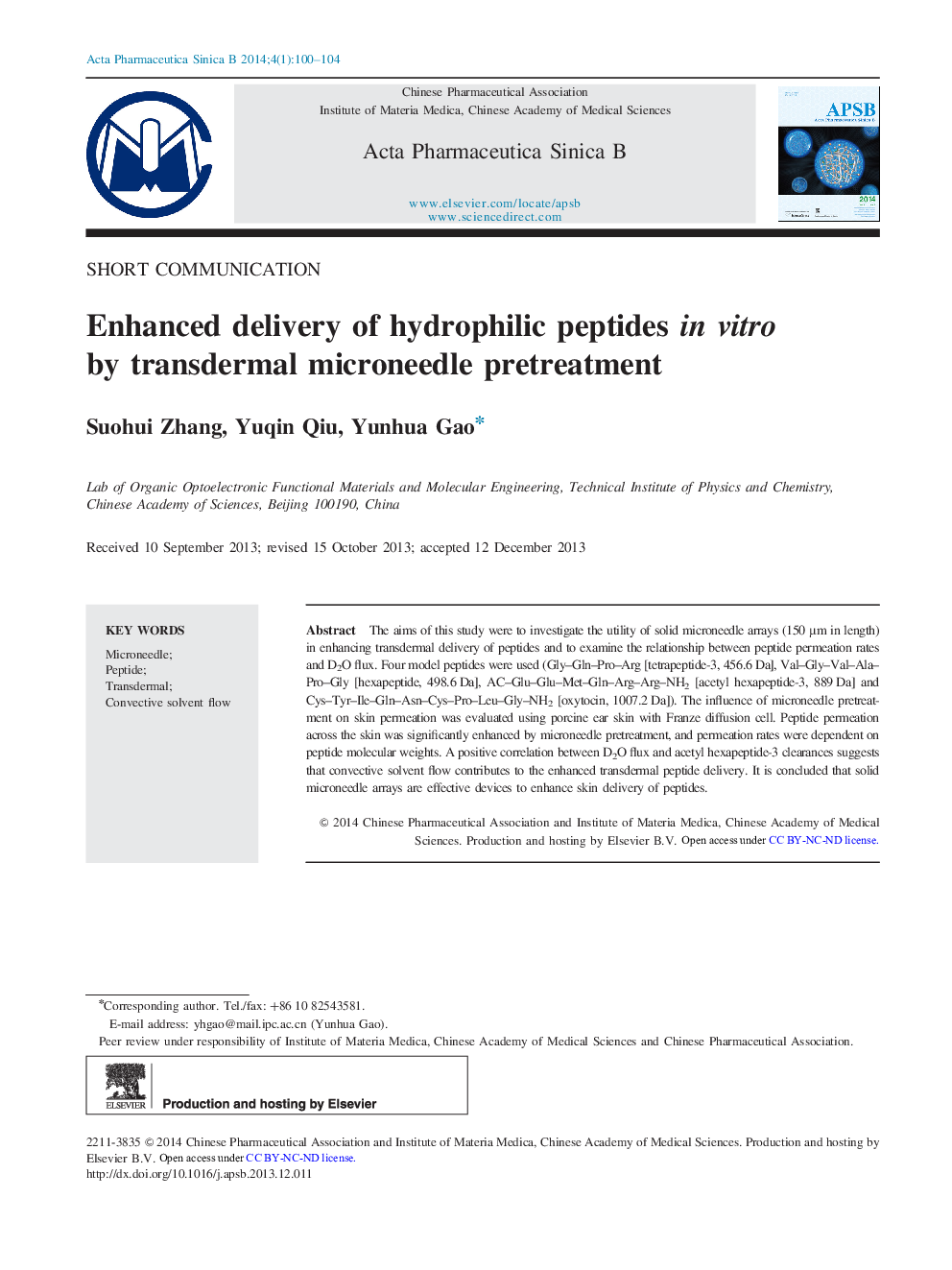| Article ID | Journal | Published Year | Pages | File Type |
|---|---|---|---|---|
| 2474818 | Acta Pharmaceutica Sinica B | 2014 | 5 Pages |
The aims of this study were to investigate the utility of solid microneedle arrays (150 µm in length) in enhancing transdermal delivery of peptides and to examine the relationship between peptide permeation rates and D2O flux. Four model peptides were used (Gly–Gln–Pro–Arg [tetrapeptide-3, 456.6 Da], Val–Gly–Val–Ala–Pro–Gly [hexapeptide, 498.6 Da], AC–Glu–Glu–Met–Gln–Arg–Arg–NH2 [acetyl hexapeptide-3, 889 Da] and Cys–Tyr–Ile–Gln–Asn–Cys–Pro–Leu–Gly–NH2 [oxytocin, 1007.2 Da]). The influence of microneedle pretreatment on skin permeation was evaluated using porcine ear skin with Franze diffusion cell. Peptide permeation across the skin was significantly enhanced by microneedle pretreatment, and permeation rates were dependent on peptide molecular weights. A positive correlation between D2O flux and acetyl hexapeptide-3 clearances suggests that convective solvent flow contributes to the enhanced transdermal peptide delivery. It is concluded that solid microneedle arrays are effective devices to enhance skin delivery of peptides.
Graphical abstractSolid microneedle significantly enhanced the delivery of peptides with low molecular weight through skin and provided a sustained release of the peptides during 24 h. Permeation rate of peptides decreased with the molecular weight increased. Figure optionsDownload full-size imageDownload as PowerPoint slide
